Main
Menu-The Manzanar Project
Fish Farming and Ranching on the Red Sea in
Eritrea
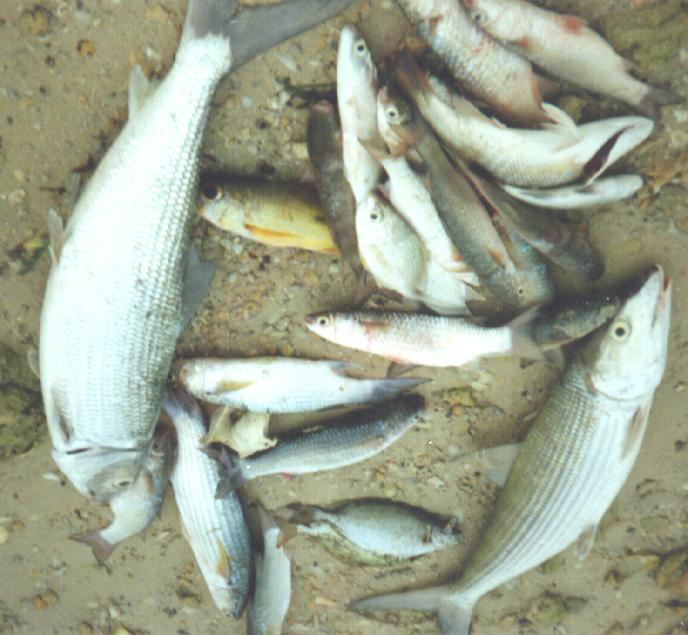 Of the various types of fish, shrimp, and crab
farmed in Eritrea, mullet and milkfish are among the most adaptable of the species being
cultured. These fish can live in fresh, salt, or brackish water, are extremely resistant
to disease and consume naturally occurring foodstuffs such as algae, plankton, and
insects. Fingerlings are collected easily among the mangroves along the seashore, then are
transported to manmade shoreline ponds where they are nurtured to maturity. Fingerlings
average one to one and a half inches at the onset and grow to a mature fish of eight to
ten inches within four months. Of the various types of fish, shrimp, and crab
farmed in Eritrea, mullet and milkfish are among the most adaptable of the species being
cultured. These fish can live in fresh, salt, or brackish water, are extremely resistant
to disease and consume naturally occurring foodstuffs such as algae, plankton, and
insects. Fingerlings are collected easily among the mangroves along the seashore, then are
transported to manmade shoreline ponds where they are nurtured to maturity. Fingerlings
average one to one and a half inches at the onset and grow to a mature fish of eight to
ten inches within four months.
To assure an ample supply of algae for fish culture, a unique, economic, natural system
is used. First, animal waste is collected and deposited in a fermenting pond. Sheep,
chickens, goats, and camels provide an ample supply of waste. After 4 to 7 days the water
in the fermenting pond is filtered and pumped to a second pond where algae growth occurs,
several days later the algae pond is purged into the fish ponds as food. Commercial
fertilizers could be added to promote growth in the algae pond if shortages were to occur.
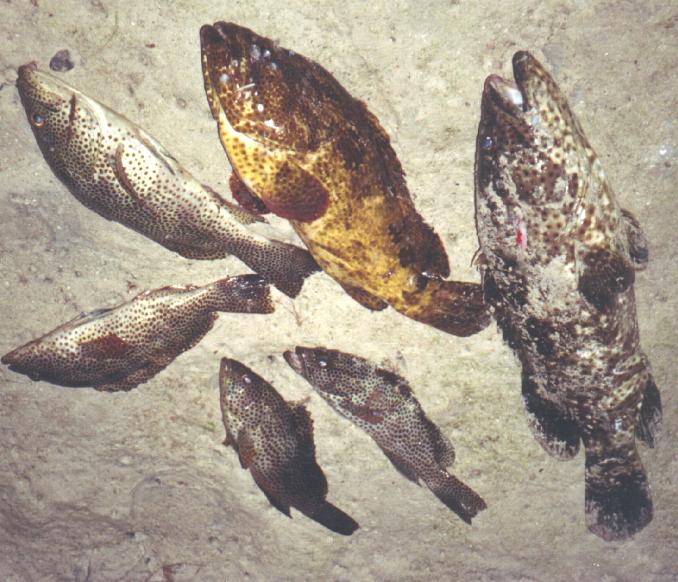 Yellow-finned black sea bream like mullet and
milkfish are extremely adaptable to changes in water temperature and salinity. However,
unlike mullet or milkfish, sea bream are carnivorous. In nature they live either in the
coral reefs offshore or in bays around the roots of mangrove trees where they feed upon
small crabs, shrimp, plankton, barnacles, clams and other organisms. Sea bream fingerlings
are captured with nets and are presently being cultured in a 50 by 50 by 4 foot shoreline
pond and in fish cages. They are fed small crabs and fish unfit for human consumption as
well as entrails and other parts that are normally disposed of when harvesting fish.
Growth rates are high for sea bream, a 4 inch fingerling will grow to 18 inches in five to
six months. Yellow-finned black sea bream like mullet and
milkfish are extremely adaptable to changes in water temperature and salinity. However,
unlike mullet or milkfish, sea bream are carnivorous. In nature they live either in the
coral reefs offshore or in bays around the roots of mangrove trees where they feed upon
small crabs, shrimp, plankton, barnacles, clams and other organisms. Sea bream fingerlings
are captured with nets and are presently being cultured in a 50 by 50 by 4 foot shoreline
pond and in fish cages. They are fed small crabs and fish unfit for human consumption as
well as entrails and other parts that are normally disposed of when harvesting fish.
Growth rates are high for sea bream, a 4 inch fingerling will grow to 18 inches in five to
six months.
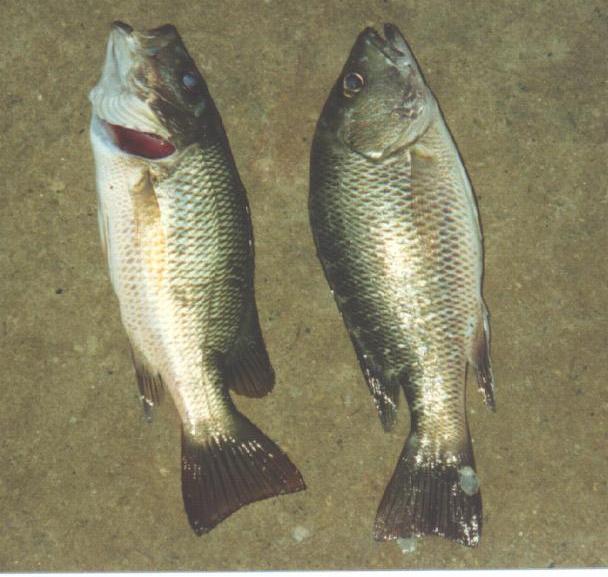 The red snapper's habitat and diet is similar to
that of the sea bream. Because of this, the two species can live in the same environment.
Snapper are raised in both sea cages and ponds and grow to 28 inches. Emperor and grouper
are the two remaining fish being farmed in the present project. Both are cultured only in
cages and are fed small fish and crabs. The red snapper's habitat and diet is similar to
that of the sea bream. Because of this, the two species can live in the same environment.
Snapper are raised in both sea cages and ponds and grow to 28 inches. Emperor and grouper
are the two remaining fish being farmed in the present project. Both are cultured only in
cages and are fed small fish and crabs.
Emperor fish and grouper grow to a length of 28 inches, are delicious when
prepared, and have a high market value.
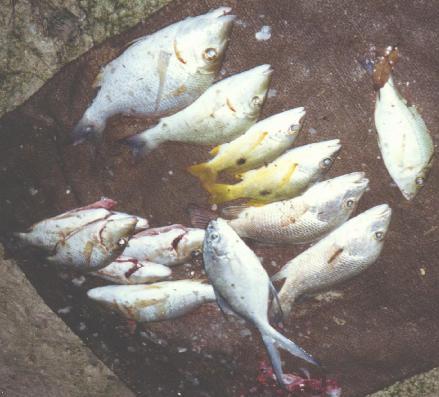
Crabs are another harvestable product of the MANZANAR project. One pond which is 33
feet square is presently devoted to crab production and is expected to provide a harvest
in 4 month cycles.

Three species of shrimp are easily netted along the Red Sea shoreline. All
three when seeded in a single 30 by 30 foot pond grow up to eight inches in length at
collection time.
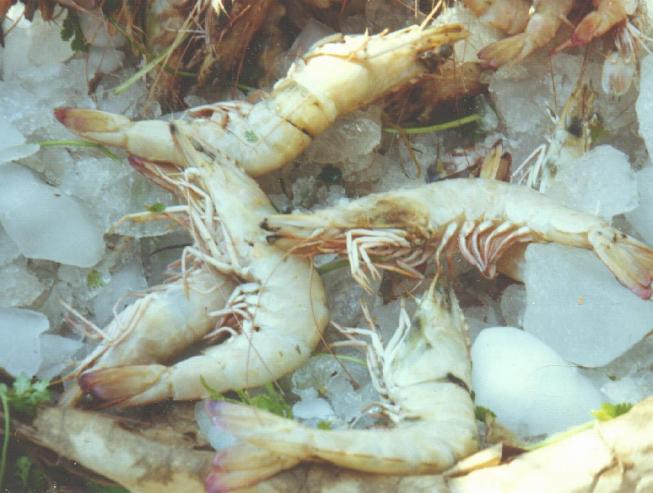
© 1998-2006, Wallace L. McKeehan, All Rights Reserved |
 Of the various types of fish, shrimp, and crab
farmed in Eritrea, mullet and milkfish are among the most adaptable of the species being
cultured. These fish can live in fresh, salt, or brackish water, are extremely resistant
to disease and consume naturally occurring foodstuffs such as algae, plankton, and
insects. Fingerlings are collected easily among the mangroves along the seashore, then are
transported to manmade shoreline ponds where they are nurtured to maturity. Fingerlings
average one to one and a half inches at the onset and grow to a mature fish of eight to
ten inches within four months.
Of the various types of fish, shrimp, and crab
farmed in Eritrea, mullet and milkfish are among the most adaptable of the species being
cultured. These fish can live in fresh, salt, or brackish water, are extremely resistant
to disease and consume naturally occurring foodstuffs such as algae, plankton, and
insects. Fingerlings are collected easily among the mangroves along the seashore, then are
transported to manmade shoreline ponds where they are nurtured to maturity. Fingerlings
average one to one and a half inches at the onset and grow to a mature fish of eight to
ten inches within four months. Yellow-finned black sea bream like mullet and
milkfish are extremely adaptable to changes in water temperature and salinity. However,
unlike mullet or milkfish, sea bream are carnivorous. In nature they live either in the
coral reefs offshore or in bays around the roots of mangrove trees where they feed upon
small crabs, shrimp, plankton, barnacles, clams and other organisms. Sea bream fingerlings
are captured with nets and are presently being cultured in a 50 by 50 by 4 foot shoreline
pond and in fish cages. They are fed small crabs and fish unfit for human consumption as
well as entrails and other parts that are normally disposed of when harvesting fish.
Growth rates are high for sea bream, a 4 inch fingerling will grow to 18 inches in five to
six months.
Yellow-finned black sea bream like mullet and
milkfish are extremely adaptable to changes in water temperature and salinity. However,
unlike mullet or milkfish, sea bream are carnivorous. In nature they live either in the
coral reefs offshore or in bays around the roots of mangrove trees where they feed upon
small crabs, shrimp, plankton, barnacles, clams and other organisms. Sea bream fingerlings
are captured with nets and are presently being cultured in a 50 by 50 by 4 foot shoreline
pond and in fish cages. They are fed small crabs and fish unfit for human consumption as
well as entrails and other parts that are normally disposed of when harvesting fish.
Growth rates are high for sea bream, a 4 inch fingerling will grow to 18 inches in five to
six months. The red snapper's habitat and diet is similar to
that of the sea bream. Because of this, the two species can live in the same environment.
Snapper are raised in both sea cages and ponds and grow to 28 inches. Emperor and grouper
are the two remaining fish being farmed in the present project. Both are cultured only in
cages and are fed small fish and crabs.
The red snapper's habitat and diet is similar to
that of the sea bream. Because of this, the two species can live in the same environment.
Snapper are raised in both sea cages and ponds and grow to 28 inches. Emperor and grouper
are the two remaining fish being farmed in the present project. Both are cultured only in
cages and are fed small fish and crabs. 
